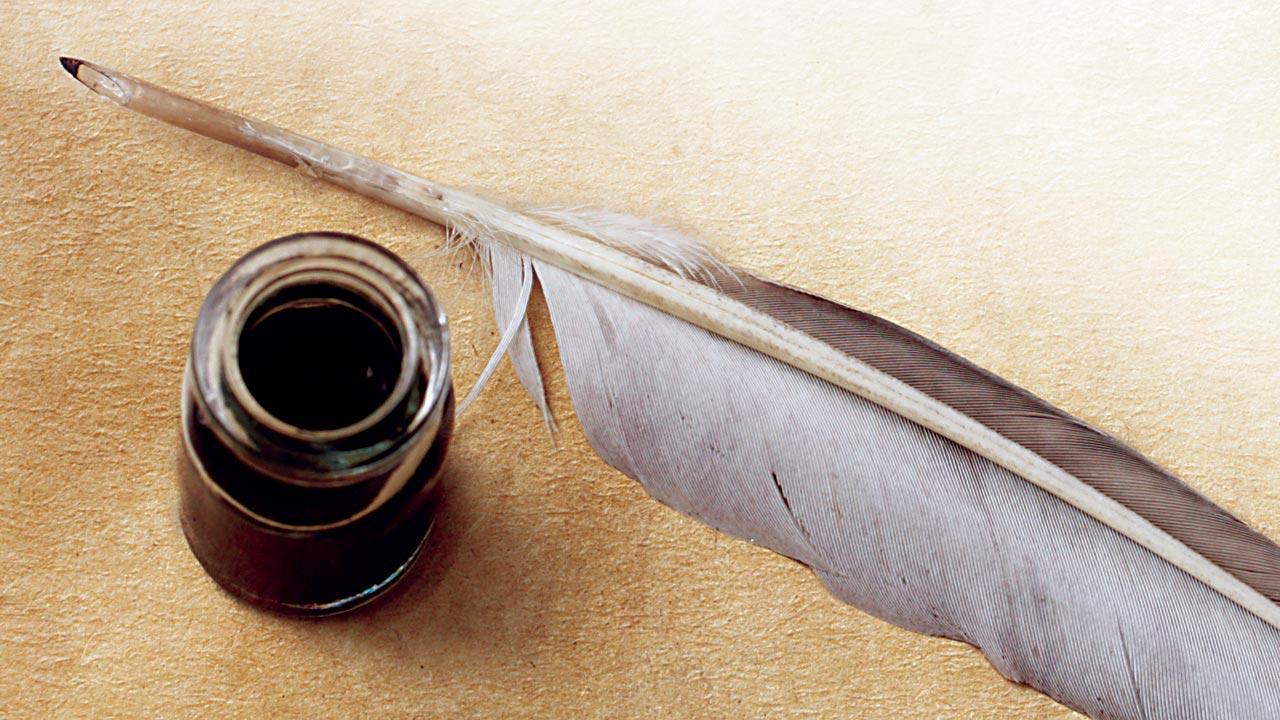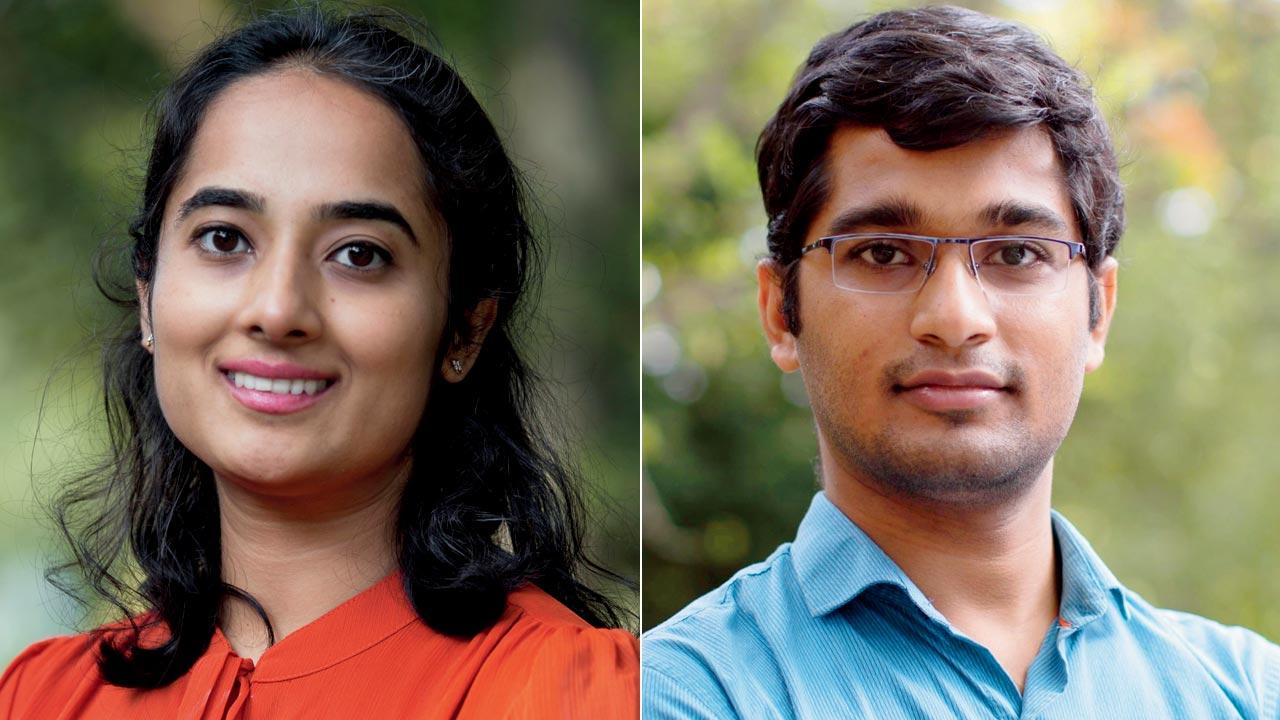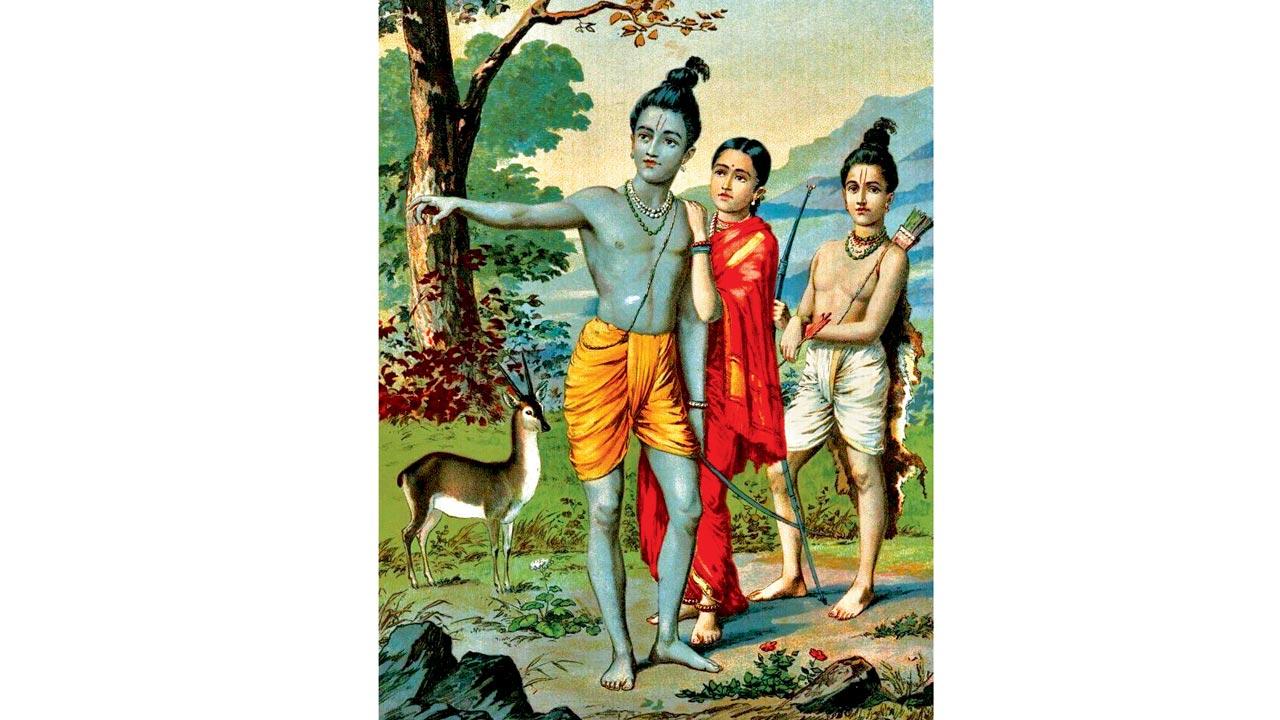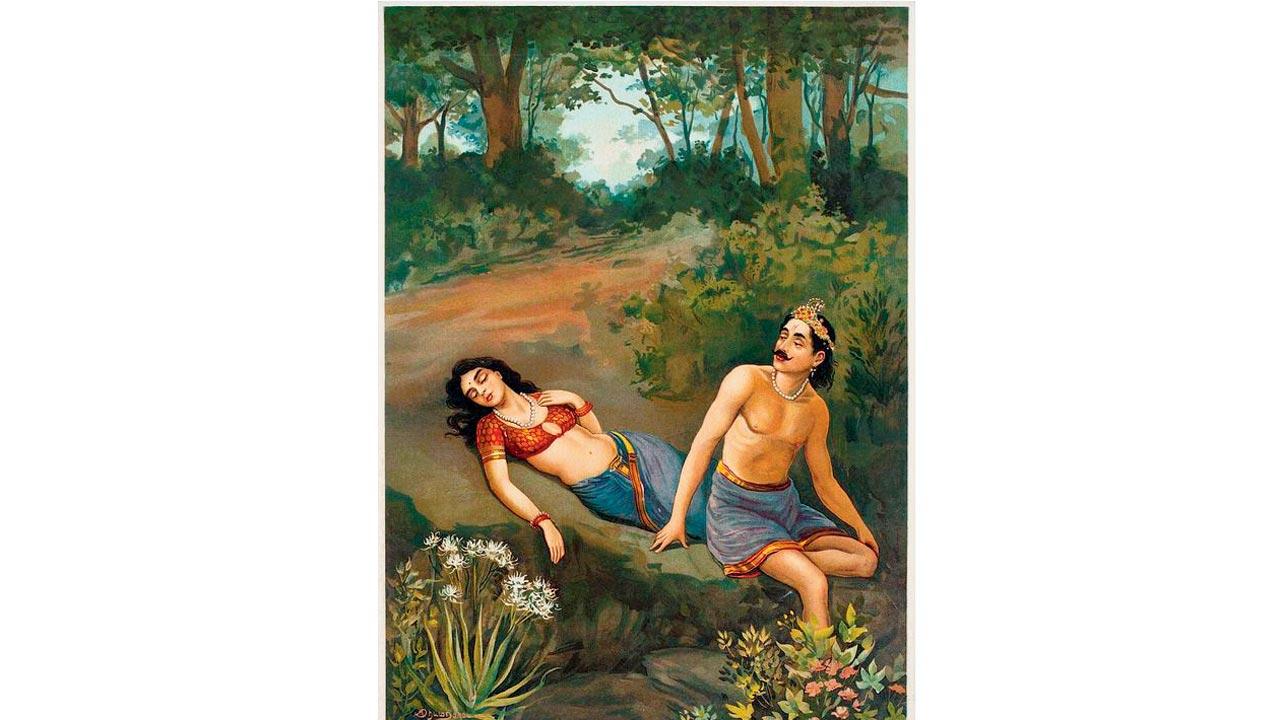A new literary work explores the theme of love through the lens of poetry spanning 3,000 years. We bring six for you to recite next time you want to up the ante

Pic/iStock
As we leaf through How to Love in Sanskrit, edited and translated by Anusha Rao and Suhas Mahesh, we smile, blush, experience awe, and feel melancholic—all at the same time. The book, a compilation of Sanskrit and Prakrit (a group of Middle Indo-Aryan languages spoken between 500 BC and 500 AD) poetry about love, is divided into delightful sections: How to flirt, How to make love, How to break up… The verses are romantic, full of yearning, and still relevant… but then, doesn’t love feel the same all over the world, time after time?
ADVERTISEMENT
 Anusha Rao and Suhas Mahesh
Anusha Rao and Suhas Mahesh
We picked six of our favourite verses/poems and the translators excavated their depth for us.
Trip down memory lane
 Ram, Sita, and Lakshman. Pics/Wikimedia
Ram, Sita, and Lakshman. Pics/Wikimedia
It became her stake in our bedroom dice games
a leash around my neck while making love
our fan when we were all sweaty after
her bedspread when we fought and slept apart:
this very shawl that she wore
which fate has now returned to me.
“This poem is from Dhiranaga’s acclaimed Sanskrit play, Kundamala (Jasmine Garland). It is one of the earliest explorations of the theme of eternal discontent in Indian literature—Ram banishing Sita. Dhiranaga’s writing stands out for strong character development, something quite unusual in old Indian literature.”
Dimples
 Princess Damayanti with Nala
Princess Damayanti with Nala
After creating her
God must have
gazed at his work admiringly
holding her face in his hands
thumb on each cheek.
That’s how she got
her two perfect dimples.
“This is from the pen of Shriharsha (12th century poet), and was probably composed in Kannauj (now in Uttar Pradesh). It is one of dozens of his Sanskrit poems on Damayanti’s beauty, the princess of Vidarbha, in his epic poem on the romance of Nala and Damayanti. Shriharsha’s poetry bears the stamp of deep scholarship—complex imagery, syntax, and vocabulary. He was only a poet, but a formidable philosopher. For 800 years, it was regarded a mark of scholarship to be able to read and interpret him.”
Happily never after
He’s handsome, they all say.
But frankly
I don’t care much for him
because he’s my husband.
Would you enjoy ambrosia
if you had to drink it every day
on the doctor’s instructions?
“You have probably heard the famous Ashtapadis of Jayadeva’s Gita Govinda. This poem is by Jayadeva’s friend, Govardhana (12th century) who was unmatched in Bengal for love poetry. Govardhana’s Arya Saptashati has seven hundred little vignettes on love—some musings of his own, some told through the voices of women and, rarely, men. Many of these poems are daring and salacious, and stand out as especially bold even within Sanskrit, which does not shy away from
such themes.”
Inferiority Complex
Seeing the lovely red
of your lips, darling
cherries hang themselves
from a tree in despair.
“This verse from the Kumarapala-pratibodha is in Prakrit. Maharashtri Prakrit, with its sweet and tender syllables, was once considered the ideal language for love. While the verse is romantic, the text, authored by Somaprabha Suri, is a series of teachings by Jain teacher Hemachandra to Chalukyan king Kumarapala. The teachings are so influential that Kumarapala converts to Jainism. Who knew that love poetry could go so well together with religious teachings?”
What gave it away?
When he came home
I didn’t look at him
I didn’t speak to him
I didn’t offer him anything.
That’s how they guessed.
“We can’t be sure, but it seems like the scene for this poem is likely set in a small village in the Deccan, possibly on the banks of the Godavari. Who wrote this poem? We don’t know, but a Jain monk Jineshvara Suri compiled all his favorite poems into a book in 11th century in Gujarat, which is how this one survives. This exquisite (still untranslated) collection—the Gaha-rayana-koso (Treasury of Gahas)—contains hundreds of verses (gahas) on all manner of topics including love, nature, and the seasons. Jineshvara Suri is still venerated by the Jain community, though his contributions to poetry are not usually in the spotlight.”
Morning after
How glorious is a woman’s face
at the start of the night
hair done up
make-up chosen with the greatest care.
And how much more gorgeous –
make-up smudged, hair tousled
the morning after?
“This is from the novel Lilavai, considered a crowning glory of the Prakrit language. It was composed by Kouhala (9th century). The novel is set in coastal Andhra Pradesh, and has three young women at the centre of the plot—Lilavai, princess of Sinhala (now Sri Lanka) and her two companions. It follows the adventures of King Hala in the underworld as he tries to win Lilavai’s hand. This poem is from a scene of lovemaking, and is flanked by many other lovely poems. Lilavai has been recently translated into English by the Murty Classical Library of India.”
 Subscribe today by clicking the link and stay updated with the latest news!" Click here!
Subscribe today by clicking the link and stay updated with the latest news!" Click here!







